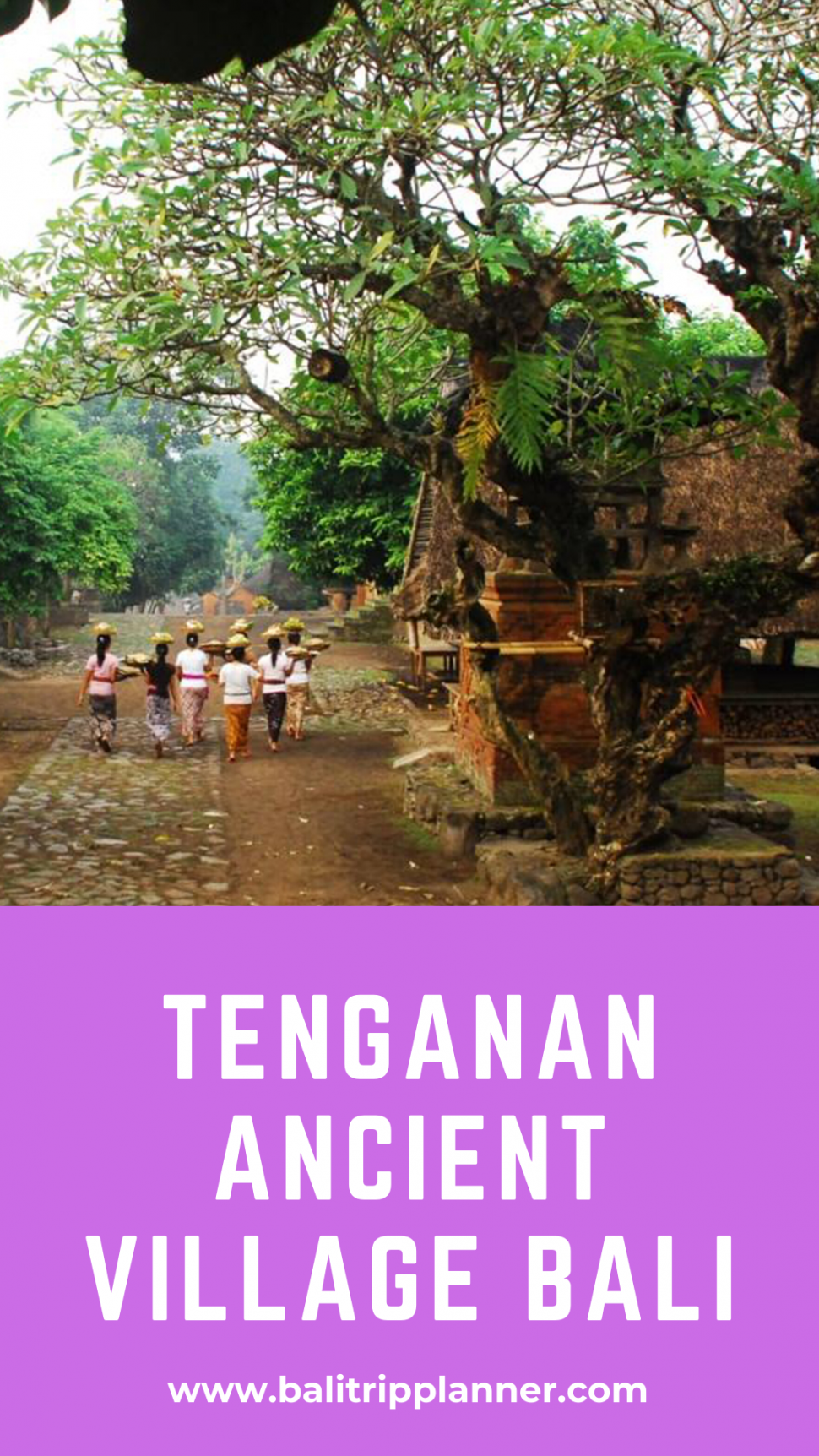Tenganan Ancient Village In Karangasem Bali
Tenganan Village is one of the Bali Aga (original Balinese) communities in Bali and it is famous for its well-preserved village layout and the ongoing survival of its traditional crafts. Located in the northwest of Candidasa, is situated about 5km from the main road, or 60 kilometers east of Denpasar, stands in stark contrast to the crowded areas of Kuta or Legian as it offers a different cultural insight into Bali. This village was the original inhabitant of Bali, before the arrival of Hindu Javanese. Tenganan retains its ancient pre-Hindu customs through a strong code of non-fraternization with outsiders, further enforced by the protection of its surrounding walls.
Tenganan is charming and has some very fascinating authentic traditional festival (ritual dances and gladiator) like Bali Aga of Tenganan often holds the battle between local youths. The people of Tenganan are skilled in the unique technique of weaving, called the ‘double ikat’, where the belief in the magical power of the fabric is essential in bringing out the beauty of the ikat cloth.

There are some versions of story telling us the history of Tenganan Village. Some say that the word Tenganan was derived from the word “tengah” or “ngatengahang” which means, “move to the inner area”. This derivation of word was having a relation with the movement of the villagers from the seaside to a rural area, in which the position of this village is in the middle of hills, which are western hill (Kauh Hill) and eastern hill (Kangin Hill). Another version reveals that the people of Tenganan came from Peneges village, located in Gianyar, precisely near Bedahulu. Based on the folklore, once upon a time Bedahulu King lost one of his horses. The people looked for it to the east and the horse was finally found dead by Ki Patih Tunjung Biru, the King’s right hand. For his loyalty, the King finally gave Ki Patih Tunjung Biru an authority to govern the land as far as the aroma of the carrion of the horse can be smelled. Ki Patih was an intelligent person, so he cut the carrion into pieces and spread it as far as he could. Thus he received a quite large area.
Tenganan Village is a convenient stopover along Bali tour pacakage itineraries to Bali’s easthtern region. Visitors will feel comfortable when visiting this area, for some facilities are available here, like food stalls, good toilets, arts shops and a quite large parking area. If we wish to have meal in restaurants or to spend the night near this area, we can go to Candidasa, which is only 3 km from this village. To get to Tenganan, get a lift up from the main road by ojek; and have a pleasant walk back down to the main road contemplating the intricacies of the Bali Aga culture.
Rites and Rituals in Tenganan Village
Many of the life-cycle rituals of the Tengananes are similar to those of the Balinese in general, but have subtle differences. Some ceremonies are unique. One of the distinguishing features is the use of geringsing. By virtue of their magical qualities geringsing are not only capable of keeping impurities and danger out of the village, but also shield and protect humans from baleful influences during rites of passage as they transition from one phase of life to the next.
The Tengananese receive their first geringsing at the hair cutting ritual. His hair is cut and placed in a basket which is placed on a folded geringsing on the balé tengah, on which the Tegananese both enters and leaves the world. In the ceremony that admits a boy or girl to the youth association of the village, they are carried in a geringsing cloth on their father’s right shoulder. In the concluding ceremony of teruna nyoma which is the initiation, the candidates wear a geringsing and bear a keris. for the tooth filing ceremony, an essential rite of passage for all Balinese Hindu, the participants pillow is covered by geringsing.
After death the genitals of the deceased are covered by a geringsing hip sash. These cloths may not be used again and so usually are sold . In the purification of the soul ceremony (muhun) the dead person’s presence, which is symbolizes by an inscribed palm leaf, is also arrayed in a geringsing. In the wedding ceremony the groom invites his in-laws to visit his parents home where the couple, dressed in festal geringsing clothing while relatives bring symbolic gifts which are placed on a geringsing cloth.
